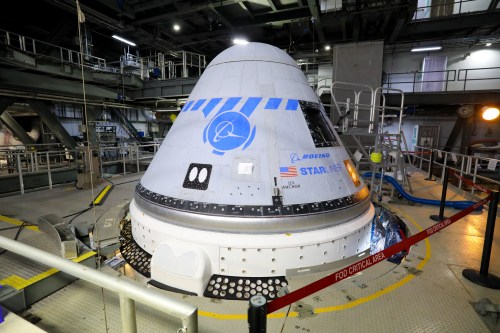
NASA said on Wednesday that it’s made significant progress on resolving technical issues with its CST-100 Starliner spacecraft, putting it on course for its first crewed test flight in April at the earliest.
The space agency wants to use the Boeing-made Starliner capsule for crewed flights to and from the International Space Station (ISS), giving it a second option alongside SpaceX’s tried-and-tested Crew Dragon capsule.
But the Starliner’s development has been far from smooth, failing a test flight in 2019 due to multiple issues before reaching the ISS in a second test flight that took three years of careful preparation. Since then, ongoing issues have caused NASA to delay the launch of its first crewed flight using the Starliner. But now it seems that the spacecraft is almost ready to fly again.
NASA said that following a successful drop test earlier this month in which it was able to validate recent modifications to the spacecraft’s parachute system, NASA and Boeing are now conducting a final analysis of the test data and aim to complete overall system certification in readiness for the first crewed flight, which will take two astronauts to the space station.
In other work, Boeing has removed around 4,300 feet of tape that was found to be a flammability risk in certain environmental conditions.
Personnel also recently carried out a two-day undock-to-landing (including undock, entry, landing, and crew recovery) dress rehearsal with recovery crew on the ground at White Sands Missile Range in New Mexico, NASA said.
Despite the progress, plenty of work still needs to be completed before the Starliner launches aboard a ULA (United Launch Alliance) Atlas V rocket from the Kennedy Space Center in Florida. It includes the completion of Crew Flight Test certification; an exercise simulating operational conditions to rehearse the various phases of the mission with the crew, flight controllers, and ground operations teams; and stacking the Atlas V rocket and Starliner before rolling them to the launchpad.
The mission, when it finally gets underway, will see NASA astronauts Butch Wilmore and Suni Williams flying aboard Starliner to the ISS, where they’ll spend up to two weeks living and working alongside other ISS crewmembers before returning in the Starliner for a parachute-assisted landing in the southwest of the U.S.
Editors' Recommendations
- How to watch the first crewed flight of the Starliner spacecraft
- First crewed launch of Boeing Starliner rescheduled to later this week
- Here are the new spacesuits astronauts will wear for tonight’s Starliner launch
- First crewed Starliner test needs good weather for launch. Here’s the forecast
- NASA’s Orion spacecraft has ‘critical issues’ with its heat shield, report finds